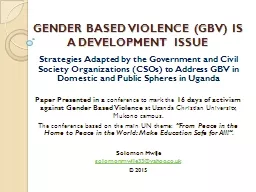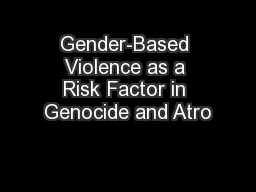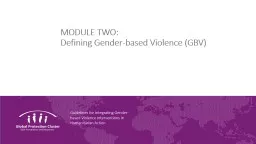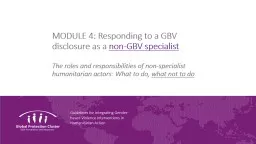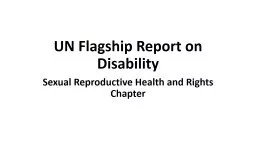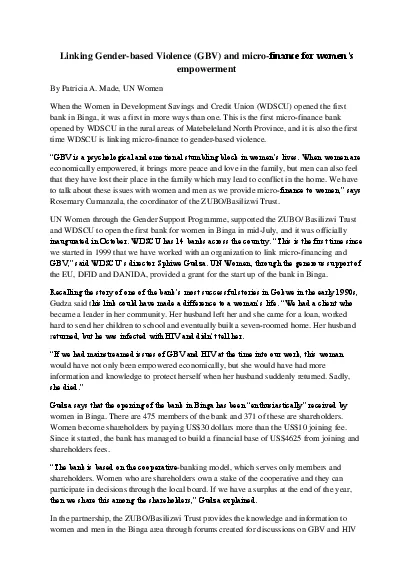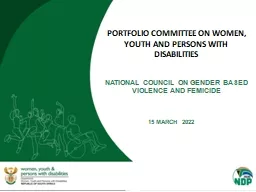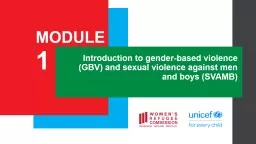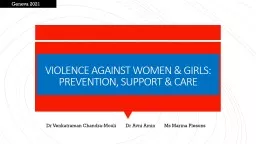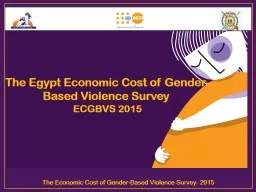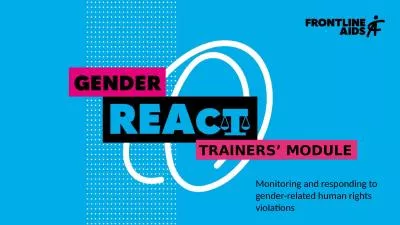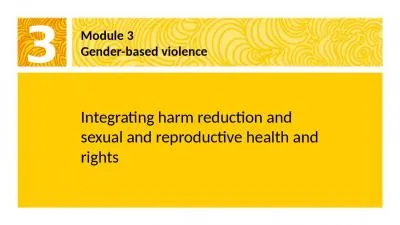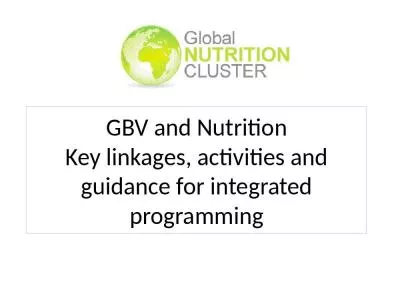PPT-GENDER BASED VIOLENCE (GBV) IS A DEVELOPMENT ISSUE
Author : markes | Published Date : 2020-10-22
Strategies Adapted by the Government and Civil Society Organizations CSOs to Address GBV in Domestic and Public Spheres in Uganda Paper Presented in a conference
Presentation Embed Code
Download Presentation
Download Presentation The PPT/PDF document "GENDER BASED VIOLENCE (GBV) IS A DEVELOP..." is the property of its rightful owner. Permission is granted to download and print the materials on this website for personal, non-commercial use only, and to display it on your personal computer provided you do not modify the materials and that you retain all copyright notices contained in the materials. By downloading content from our website, you accept the terms of this agreement.
GENDER BASED VIOLENCE (GBV) IS A DEVELOPMENT ISSUE: Transcript
Download Rules Of Document
"GENDER BASED VIOLENCE (GBV) IS A DEVELOPMENT ISSUE"The content belongs to its owner. You may download and print it for personal use, without modification, and keep all copyright notices. By downloading, you agree to these terms.
Related Documents

